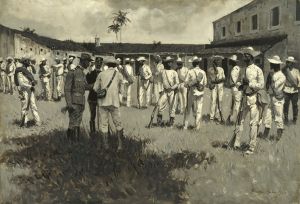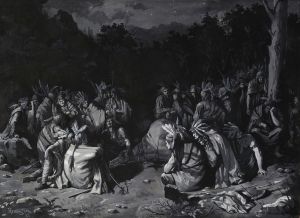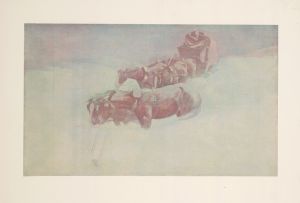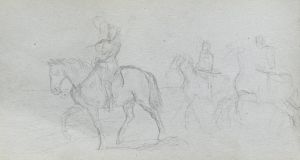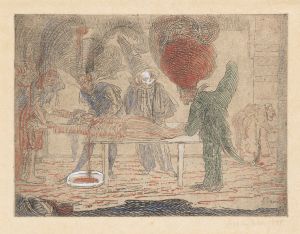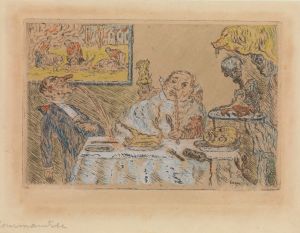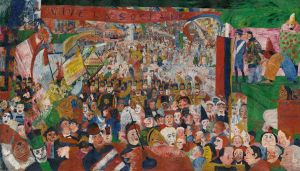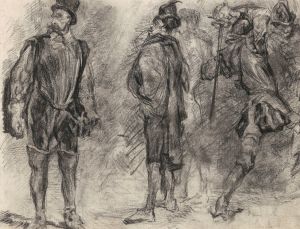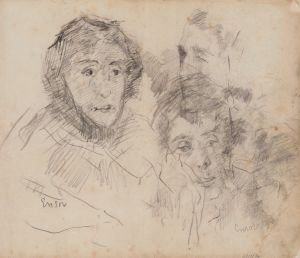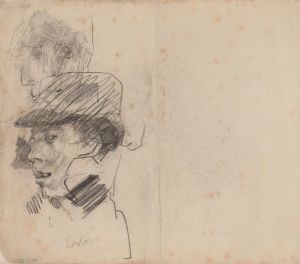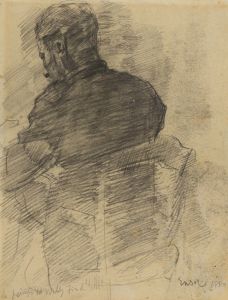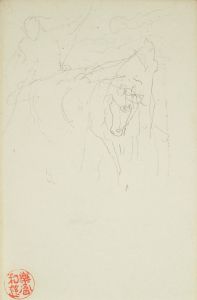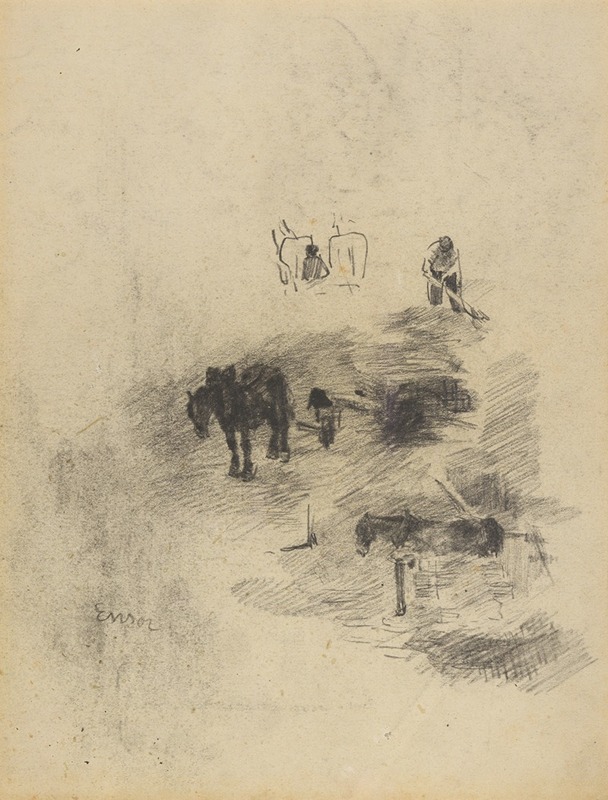
Paarden, kar en werkman
A hand-painted replica of James Ensor’s masterpiece Paarden, kar en werkman, meticulously crafted by professional artists to capture the true essence of the original. Each piece is created with museum-quality canvas and rare mineral pigments, carefully painted by experienced artists with delicate brushstrokes and rich, layered colors to perfectly recreate the texture of the original artwork. Unlike machine-printed reproductions, this hand-painted version brings the painting to life, infused with the artist’s emotions and skill in every stroke. Whether for personal collection or home decoration, it instantly elevates the artistic atmosphere of any space.
James Ensor's painting "Paarden, kar en werkman" (translated as "Horses, Cart, and Workman") is a notable work by the Belgian artist, who is renowned for his unique style that blends elements of Impressionism, Symbolism, and Expressionism. Ensor, born in 1860 in Ostend, Belgium, was a pivotal figure in the transition from 19th-century realism to 20th-century modernism. His work often features satirical and fantastical elements, reflecting his critical view of society and the human condition.
"Paarden, kar en werkman" is an example of Ensor's exploration of everyday life, capturing a scene that might seem mundane at first glance but is imbued with deeper meaning upon closer inspection. The painting depicts a workman with a cart and horses, a common sight in Ensor's time, especially in the coastal town of Ostend where he spent much of his life. This setting provides a glimpse into the daily life and labor of the period, showcasing Ensor's interest in the ordinary and his ability to elevate it to art.
Ensor's technique in this painting reflects his mastery of color and light. He often employed bold, vibrant colors and dynamic brushstrokes, which can be seen in the way he captures the textures of the horses' coats and the workman's attire. The composition of the painting is carefully structured, guiding the viewer's eye through the scene and highlighting the interaction between man and animal, a recurring theme in Ensor's work.
The painting also reflects Ensor's interest in the social dynamics of his time. The workman, depicted with a sense of dignity and purpose, represents the working class, a subject that Ensor frequently explored in his art. By focusing on such themes, Ensor contributed to the broader artistic movement of the late 19th and early 20th centuries that sought to portray the realities of modern life and the complexities of human experience.
Ensor's work, including "Paarden, kar en werkman," was influential in the development of modern art. His willingness to experiment with form and content paved the way for later avant-garde movements. Despite facing criticism and resistance from the traditional art establishment during his early career, Ensor eventually gained recognition and acclaim, becoming a member of the Royal Academy of Belgium in 1929.
Today, James Ensor is celebrated as one of Belgium's most important artists, and his works are held in major collections around the world. "Paarden, kar en werkman" exemplifies his innovative approach to painting and his ability to capture the essence of his subjects with both realism and imagination. Through this work, Ensor invites viewers to consider the beauty and complexity of everyday life, encouraging a deeper appreciation for the world around them.





